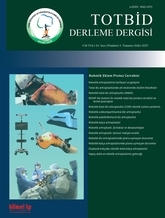
Robotic-assisted arthroplasty offers improved component positioning accuracy and surgical precision however, it presents significant challenges such as high costs, prolonged operative times, steep learning curves, and system-related complications. Technical failures and specific complications have been reported in robotic knee and hip arthroplasties, while long-term clinical superiority over conventional techniques has yet to be clearly demonstrated. Therefore, careful patient selection, cost-effectivity analysis, and advanced surgical team training are crucial for successful implementation.